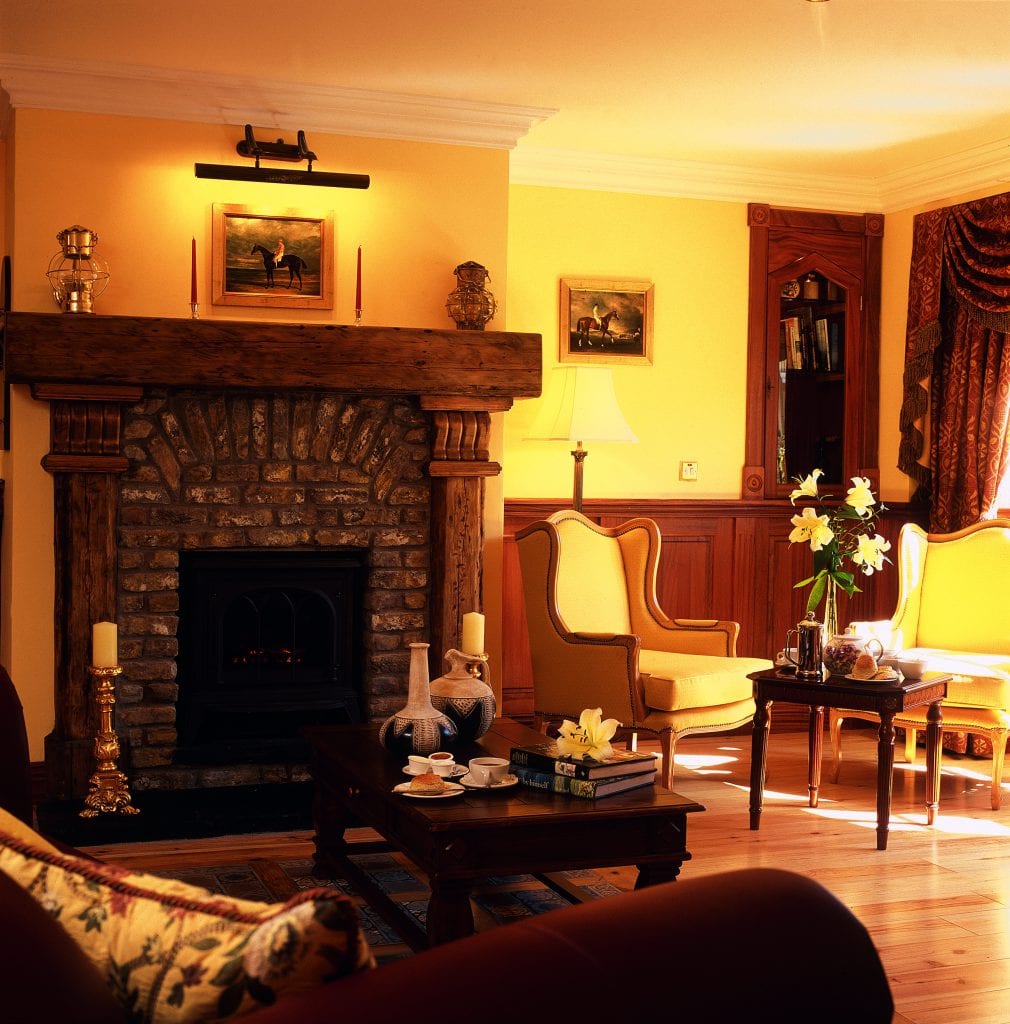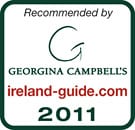History of Friars Lodge
Friar's lodge and Friar's Street in which it is situated take their name from the ruined Carmelite Friary nearby. The Carmelite Order was founded by St. Berthold, on Mount Carmel in Palestine, in 1214. The friary, dedicated to the Blessed Virgin Mary, near Abbey Well in Kinsale, was founded by Robert Fitzrichard Balrain in 1334.
During the period of the sectarian Penal Laws the friars, despite great danger maintained a presence in or around the town and as a result have always had a special relationship with the townspeople of Kinsale - a relationship which still exists today.
Kinsale was a walled town and a section of this wall ran parallel to Friar's Street, behind Friar's Lodge - a segment of this wall still stands nearby today. In 1381, the Charter of King Richard 2nd recites the town of Kinsale being on the seashore and 'having of late received great insult or attack from the Spanish and Irish enemies, and English rebels, who designed the destruction thereof, the King, considering the safety of the town, and desirous that it be surrounded by a stone wall, did hereby commit to the custody of the provost the small custom of the said town to be used for the building of these walls' (Council Book of Kinsale).


There were a number of gates allowing entry to the town and one of these gates, known as Friar's Gate, situated at the upper end of Friar Street, was used by the friars to gain access to the town and by farmers and traders bringing goods and produce into market. A toll was imposed at the gate on all merchandise brought to market.
In 1601 the Carmelite Friary and Friars Gate played a prominent part in the Battle of Kinsale. A Spanish force of 3,800 men, under the leadership of Don Juan del Aquila, landed in Kinsale on September 22 (old style calendar) and took possession of the town. They came to support the rebellion of the northern chieftains Hugh O' Neill and Hugh O' Donnell against the English Crown. They set about reinforcing the old walls and building defensive works. The English forces arrived three weeks later and laid siege to the town.
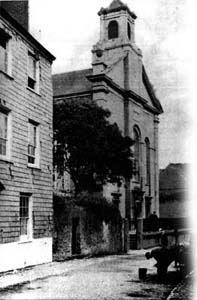

The Friary, although outside the town walls, was held in strength by the Spaniards but was subject to such a terrible bombardment by the English that it was battered to pieces, and by December 20th was no longer tenable. The defeat of the Irish forces on December 24th 1601, and the later surrender of the Spanish forces in the town, signaled the end of the old Irish clan system and led to over three centuries of further English occupation in Ireland.
Visitors to County Cork may have noticed a group of men on the road playing an ancient game of road bowling. The game usually involves two or more men throwing a 28oz. iron "bowl" over a designated course, the object being to complete the course in the least number of "throws". The game is played in only two counties in Ireland -Cork and Armagh.
It is claimed that this game originated during the Battle of Kinsale. The story goes that the Spanish soldiers, while often engaged in fierce combat, also had long periods of inactivity and boredom, and to entertain themselves hurled iron cannon balls along the ramparts.It is interesting to note that the deeds of 10 Friar's Street - Friar's Lodge - entitle the owners under an old permit to connect with the old town wall subject to a payment to the Kinsale Urban Council of the munificent sum of one shilling and three pence three farthings (.08 Cents) a year.
Friar's Street, at one stage had two shops, a blacksmith's forge, a bonded warehouse, and of course the Church of St. John the Baptist - the Parish Church - is located there. This church was erected in 1831 on the earlier site of a smaller church built in 1809. The ancient Church of St. Multose nearby was erected by the Normans on the site of a sixth century church built by a Christian saint of the same name. The image of St. Multose over the west door shows him bearing a stone on his right shoulder to indicate his fame as a builder.
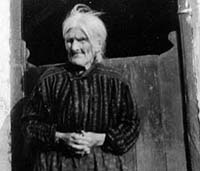

There is a traditional story told in Kinsale that when the saint was building his Church he asked the local men for help. They refused to help him and he cursed them, proclaiming that only a stranger would prosper in Kinsale henceforth. The curse worked for many years as few locals prospered in town but the Tierney family have proved that the curse no longer works.
The church has witnessed many historic events including the proclamation of King Charles 2nd as King of England by Prince Rupert, nephew of Charles 1st, eleven years before he was eventually proclaimed King in Westminster Abbey in 1660. Prince Rupert was in the harbour with a fleet of ships in 1649 and hearing of his uncle's execution took this dramatic action.
Friar's Lodge served as a temporary hospital in the early years of the twentieth century. John Joseph Tierney, father of the present owner Finbarr Tierney, was born here in 1918. Apparently the local hospital was damaged during the troubled times in this period. Friar's Lodge was then owned by an Elizabeth Jane Bolton, who died on the 25th June 1924 having previously made her last will whereby she devised all her property to David Howe Acton, as her executor, to sell the same and apply the proceeds as required by her will.
David Howe Acton was a member of an old established family in Kinsale, who had extensive business interests in the town and surrounding area. The family owned a hardware store, printing works, builder's provider's yard, an undertaking business, taxi service, and a garage. In addition they owned various properties in Kinsale and a large farm on the outskirts of the town. David Howe Acton was active in many local organisations and was Chairman of the Kinsale Urban Council for a number of years.
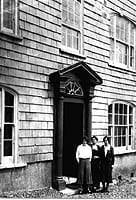

He also acted as an auctioneer and in this capacity he sold the family farm in Ballinacubby to John Joseph Tierney. David Howe Acton had a large family of 13 children and when his wife died in childbirth he was forced to raise them on his own.
David Howe Acton, in his capacity as executor, sold the property, now known as Friar's Lodge, in December 1924 to one Nora Lehane (Spinster) for the sum of £250 (€317.50).
Little is known of this lady, except she continued to rent the property to the South Cork Board of Public Works for use as a temporary hospital at a yearly rent of £50 (€ 63.50) including rates. Nora Lehane in turn sold the property in February
1934 to Thomas Francis Ryan for the sum of £285 (€362).
Thomas Francis Ryan was the fifth generation of a family of lighthouse keepers and bought the property as a retirement home. He was born on Eagle Island, where there were two lighthouses, and remembered one being washed away by the sea in December 1894, while he and his two sisters were there.
He served on lighthouses all around the Irish coast and, while stationed at the Old Head of Kinsale lighthouse, he met and married Catherine Galvin from Kilcoleman, a nearby townland. Catherine's brother was a publican and jarvey in Kinsale. He owned several horses and, on being asked to care for the house and garden in Friar's Street, took one of his horses in the front door, through the hallway, and up the steps to the garden, in order to keep the grass down.
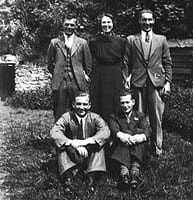

During the war years Thomas Ryan brought his grandchildren and their parents from England and Northern Ireland. They lived on the upper floors of the house and had many happy memories of their years there. The young beautiful raven haired Ryan girls, with their laughing eyes and peaches and cream complexion, set many a young man's heart racing until they were unfortunately forced to emigrate back to England during economically depressed times in Ireland.
Thomas Francis Ryan sold the property to his daughter, Elizabeth Ryan (spinster) in September 1945 for the sum of £250 (€ 317.50) for the premises and £50 (€ 63.50) in respect of the furniture and fittings. Elizabeth Ryan ran a traditional guesthouse business here and was well known for her cooking and baking skills. She was also skilled in needle and crochet work which was much in demand. On 12th September 1957 Elizabeth Ryan ceased to be a spinster when she married William Thomas Evans, a Welshman. Perhaps her cooking skills stole his heart.
When Elizabeth Evans began keeping guests in 1945 and for many years afterwards, Kinsale was not the bustling tourist town it is today. It was a sleepy backwater with little work and less prospects for its people. There were few cars and fewer still visitors came to Kinsale. Those who did invariably arrived by public transport. Crime was almost non-existent in the town and to ensure it remained so the local detective made it his business to meet each bus on its arrival and follow any stranger who alighted to his lodging. This ensured he knew the whereabouts of every newcomer should anything untoward happen in town. There can be no doubt he took many a trip to Friar's Street.
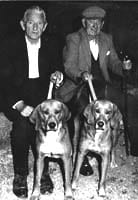

Elizabeth Mary Evans sold the property which she described as the Georgian, Friar's Street to Sicander Adam of Kingston-on-Thames, Surrey in October 1974 in consideration of the sum of £10,000 (€12,700). Sicander Adam was born in East Africa of Indian descent but subsequently left Africa and settled in England. He later went to his ancestral home of India, ostensibly to settle there, but he was appalled by the poverty and conditions he encountered and returned to England.
Sicander Adam continued to run a guest house business on the property and also had an interest in a restaurant and bar in Main Street, Kinsale. In addition he operated a business as an antique dealer and specialised in brass objects. Finbar and Maureen Tierney, the present owners, purchased the property, now known as Friar's Lodge, in May 2001 from Sicander Adam.
Finbar and Maureen Tierney have run a number of successful businesses in Kinsale. They were the proprietors of the Armada bar before Finbar decided to leave the bar business and set up as a building contractor. He has since completed a large number of residential and business units both locally and throughout the Cork area. They operated a guest house in the town which they had owned for many years and were also proprietors of a launderette.
Friar's Lodge has been developed to the highest standards of modern comfort and luxury.


While achieving these standards the Tierney family also ensured that Friar's Lodge blended with the local streetscape and conformed to the customs and traditions of this old historic town. They retained and enhanced the magnificent hanging slated frontage which was such a feature of the architecture old Kinsale and while the building has the most modern amenities and decor, it still retains an aura of its historic past.
The Carmelite Friars in Kinsale were always noted for their tradition of providing hospitality and extending the hand of friendship to travelers arriving in Kinsale.
Finbarr and Maureen Tierney have continued this tradition and their guests can be assured that their stay at Friar's Lodge will remain a memorable one.
